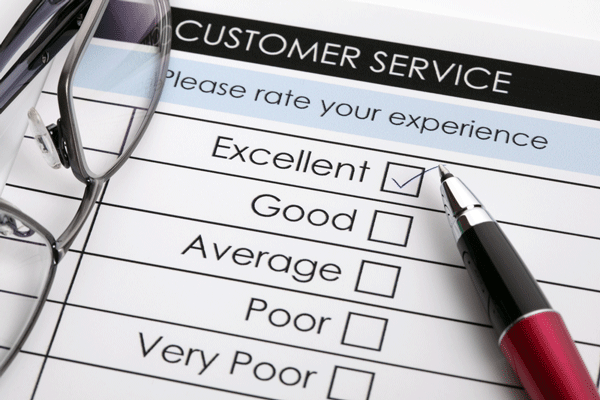Enhancing Customer Service: 3 Strategies to Make Customers Happy!
No field service business is perfect, and each makes a mistake from time to time. It's also true that some customers, frankly, are extremely...
2 min read
 ServicePower
:
October 17, 2017
ServicePower
:
October 17, 2017

Companies heavily dependent on field services as touch points with customers have a special responsibility to themselves to look after the "softer" side of field service operations if they want to retain satisfied customers. The Aberdeen Group's report "Secrets to Optimize Field Service for Better Customer Experiences" found that the trend has been for the best performing companies to move attention away from operational metrics and more on customer satisfaction metrics in evaluating field service performance.
The standard practice has been to focus on the operational and cost-reduction side, reducing travel time, increasing worker productivity in terms of number of job completions. They have found that exclusive focus on operations may be misleading. These operational metrics such as time to completion and travel time may, indeed have an effect of customer satisfaction. If technicians can fix more appliances in a day, that may seem great because more customers have things fixed. The problem comes with the quality of the repair and the way the technician relates to the customers.
What if the piece of equipment fails again tomorrow because the technician didn't take the time to find the true cause of the original problem? What if the customer's schedule does not fit in well with the compressed schedule the company imposes on the technician in order to optimize travel time? All of these efficiency steps may not improve customer relations and retention, but could actually lead to negative experiences.
Customer satisfaction forms have been springing up as a new source of important metrics. One such form includes customer ratings of:
An interesting format can be seen here in documents sent to customers after a service call.
Apps are available for collecting customer satisfaction metrics via smartphones. This kind of data collection enables field service managers to collect customer satisfaction metrics in close to real-time, once repairs are completed. Follow-up customer satisfaction data should be collected for an extended time after the service contact as well, to see if things change.
Customer data can lead to improvement in customer satisfaction and retention. This data is also valuable for personnel management. Supervision of field service personnel is one of the most difficult aspects of field service management. Off-site customer satisfaction ratings can provide a window into where individual service personnel may need extra attention.
Another point of view is that customer satisfaction is a core concern of field services, where these services represent the point of contact between the company and its customers. A company may receive millions of phone calls about a product and may be able to handle each one very well. But the customer may not see his or her relationship with the company as simply a single product call, but as an ongoing relationship, especially where the company is banking on contract renewals. Organizations able to skillfully manage the entire experience of the customer, extended over time, reap enormous benefits: enhanced customer satisfaction, reduced churn, increased revenue, and greater employee satisfaction.
Focus group studies have found that even if your company evaluates customer satisfaction every time a customer calls or makes contact, customers can be unhappy with their overall interaction and can be lured away by competitors. The deeper customer dissatisfaction might not be with individual contacts, but might slowly erode over multiple contacts and over time as small problems are not addressed. Often customer service focus on efficiency or on closing new sales leads them to ignore ongoing complaints, or not to handle customers' needs to change the relationship in ways that would please them.

No field service business is perfect, and each makes a mistake from time to time. It's also true that some customers, frankly, are extremely...

Quite often, the terms customer experience and customer service are used interchangeably. While they are related, they are not the same thing. In...

Many companies now use customer surveys to accumulate data and learn more about what people want. If you're using this tool in your own business, do...